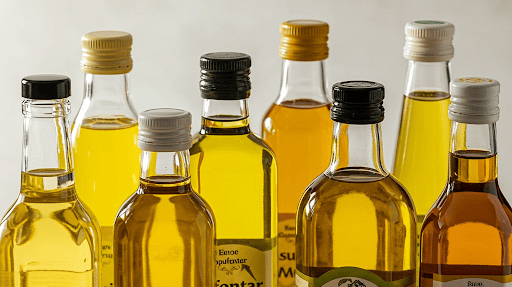Cargill’s Innovative Process for Reducing Mineral Oil Hydrocarbons in Vegetable Oils
BEVERAGES


This is an AI generated illustration and does not represent actual product or service.
In the modern food industry, ensuring the safety and quality of edible oils is paramount. One of the emerging concerns in this regard is the presence of Mineral Oil Hydrocarbons (MOH) in vegetable oils. MOH, which includes Mineral Oil Saturated Hydrocarbons (MOSH) and Mineral Oil Aromatic Hydrocarbons (MOAH), can contaminate oils through various sources such as packaging materials, processing aids, and environmental factors. These contaminants are not only undesirable from a health perspective but also pose regulatory challenges for food manufacturers. To address this issue, Cargill has developed an innovative refining process that significantly reduces MOH levels in vegetable oils, ensuring safer and higher-quality products for consumers.
The Problem: MOH Contamination in Edible Oils
Mineral Oil Hydrocarbons (MOH) are complex mixtures of hydrocarbons that can contaminate vegetable oils during production, processing, or storage. MOSH consists of linear, branched, and cyclic alkanes, while MOAH includes alkylated aromatic hydrocarbons. These contaminants can migrate into oils from sources such as:
- Packaging materials: Recycled cardboard, jute bags, and plastic materials like polypropylene or polyethylene.
- Processing aids: Lubricants, exhaust gases, and mineral oil-based additives.
- Environmental factors: Airborne pollutants and industrial emissions.
MOH contamination is a significant concern because certain components, particularly MOAH, have been linked to potential health risks. Regulatory agencies worldwide are increasingly focusing on limiting MOH levels in food products, creating a pressing need for effective removal methods.
Traditional oil refining processes, which include degumming, bleaching, and deodorization, are not fully effective at removing MOH, especially the low-volatility components. This gap in refining technology has led to the development of Cargill’s innovative process, which targets MOH removal while maintaining the quality and nutritional value of the oil.
The Solution: High-Temperature Stripping in a Stripping Column
Cargill’s patent pending process introduces a novel step in the refining of vegetable oils: high-temperature stripping in a stripping column. This step is designed to remove MOSH and MOAH efficiently while minimizing the formation of unwanted by-products such as trans fatty acids and polymerization products. The key features of the process include:
1. High Temperature and Low Pressure: The oil is heated to temperatures between 270°C and 320°C and subjected to a vacuum pressure of 1 to 4 mbar. These conditions enable the evaporation of low-volatility MOH components without degrading the oil.
2. Short Residence Time: The oil spends less than 20 minutes in the stripping column, with preferred residence times ranging from 1 to 10 minutes. This short duration prevents thermal degradation and the formation of by-products.
3. Stripping Column Design: The process utilizes a stripping column equipped with structured packing, which enhances the interaction between the oil and the stripping agent (typically steam). The packing has a specific surface area of 100 to 750 m²/m³, ensuring efficient removal of MOH.
4. High Yield: The process achieves a high yield of refined oil, with more than 90% of the input oil retained as a MOH-reduced retentate. The remaining fraction, containing concentrated MOH, is removed as a distillate.
How It Works: The Science Behind the Process
Cargill’s process builds on traditional refining steps but adds a critical evaporation step to target MOH. Here’s how it works:
1. Degumming and Bleaching: The crude oil is first degummed to remove phosphatides and bleached to improve color and remove impurities. These steps prepare the oil for the final MOH removal process.
2. High-Temperature Stripping: The oil is subjected to evaporation in the stripping column. The combination of high temperature and low pressure causes the MOH components to volatilize, while the short residence time prevents thermal degradation of the oil.
3. Deodorization: After stripping, the oil may undergo a final deodorization step at lower temperatures (below 270°C) to remove any remaining volatile compounds and improve flavor.
Benefits of Cargill’s Process
Cargill’s innovative process offers several advantages for both manufacturers and consumers:
1. Significant Reduction in MOH: The process reduces MOSH and MOAH levels by at least 55%, and in some cases by up to 70%, compared to conventional refining methods. This ensures that the final product meets stringent safety standards.
2. Preservation of Oil Quality: By minimizing the formation of trans fatty acids and polymerization products, the process maintains the nutritional and sensory qualities of the oil.
3. High Efficiency: The short residence time and high yield make the process economically viable for large-scale production.
4. Versatility: The process can be applied to a wide range of vegetable oils, including palm oil, soybean oil, sunflower oil, and canola oil, making it a versatile solution for the industry.
5. Regulatory Compliance: With increasing regulatory scrutiny of MOH, Cargill’s process helps manufacturers comply with safety standards and meet consumer demand for cleaner products.
Applications and Future Implications
Cargill’s MOH-reduction process has broad applications in the food industry, particularly in the production of cooking oils, margarines, and other fat-based products. By ensuring lower MOH levels, the process enhances the safety and appeal of these products for health-conscious consumers. Moreover, the process aligns with global trends toward cleaner labels and safer food production.
Cargill’s patented process for reducing MOH in vegetable oils represents a significant advancement in food safety and quality. By combining high-temperature stripping with precise control of pressure and residence time, the process effectively removes harmful contaminants while preserving the integrity of the oil. This innovation not only addresses a critical health concern but also sets a new standard for the edible oil industry


